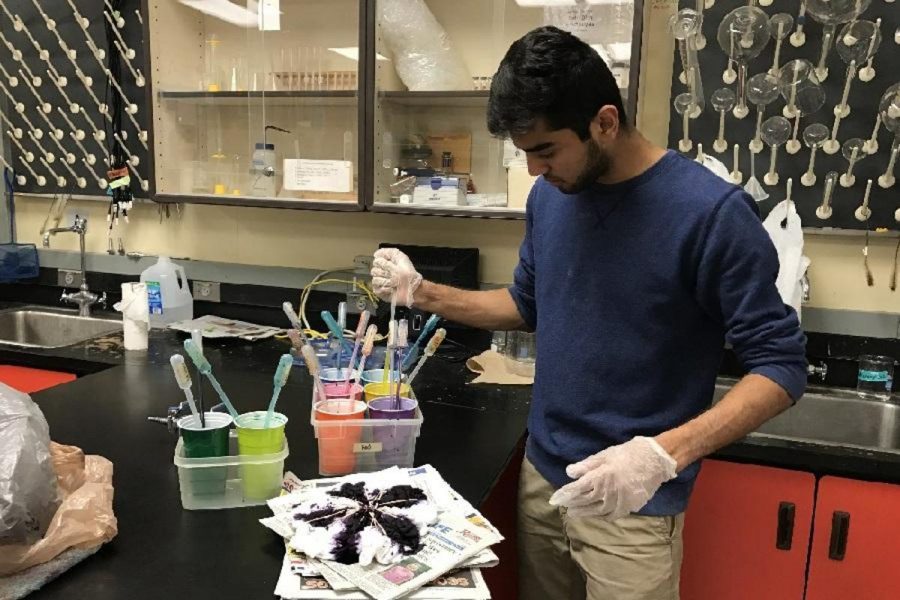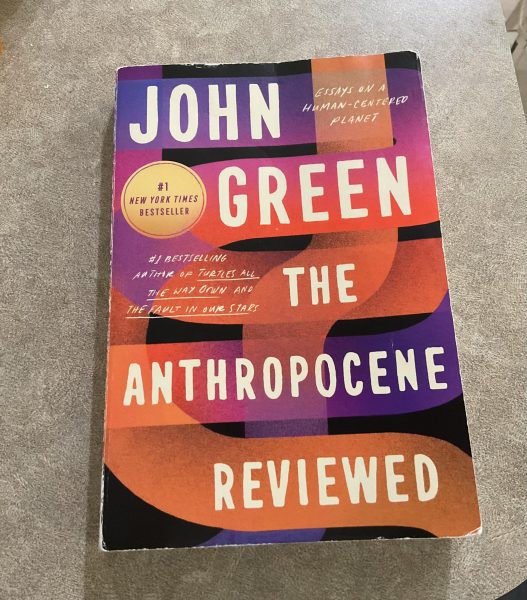Tie-dye to die for
Chemistry classes create colorful combinations
COLOR. Junior Rishav Dasgupta creates his yellow and purple scrunched shirt design for the annual Tie-Dye Day. Students in all chemistry classes were given the opportunity to create their own tie-dye designs. On a future date, they will all show off their work with the annual Tie-Dye group picture.
“Mere color, unspoiled by meaning, and unallied with definite form, can speak to the soul in a thousand different ways,” once said the writer Oscar Wilde.
On Thurs., Mar. 9, students in all chemistry classes took a break from the curriculum; instead, they received the opportunity to embrace colors with the annual Tie-Dye Day.
“While some choose to opt out, favoring to spend the day doing something more ‘useful’ or pertaining to the curriculum, I believe that Tie-Dye Day is one of the most useful days, even in AP Chemistry
“It temporarily transports us back to childhood and a time of less stress and more simplicity,” said Rishav Dasgupta, 11.
Students folded their shirts, which had previously been soaked with sodium carbonate dissolved in water, in various different ways, rubber banding them to keep them in the necessary position.
Then they could apply dye to the fabric with pipettes of different colors, including red, turquois, and purple.
“Tie-Dye Day is so fun because we get to take a break from the humdrum of chemistry! It’s so exciting to create a design and wait and see the masterpiece that comes after the wash,” said Anita Pan, 11.
Students were given advice on how to make certain designs and the best colors to use together. The most common design created was the rainbow spiral because it was the easiest to fold and dye.
Students were also told to soak the material with die if they wanted to avoid having any white areas on their shirts; many chose not to.
“I don’t see what’s wrong with having white on the shirt. I think that white gives the shirt some character,” said Lavanya Konda, 11.
Those who tie-dyed were required to leave their shirts at school overnight to allow the dyes to bind to the cotton of the shirt, becoming a part of the fabric. This is why the dyes remain vibrant even after several washings.
“Many don’t realize how much of tie-dye is chemistry. In fact, Tie-Dye Day is basically a lab based on bonding. The dyes are chemicals that react with the fabric molecules of the shirt, an acid-base reaction that is so slow.
“This is why we ask students to leave their shirts overnight. Some of the dyes take longer to react than others, but even the slowest reaction is completed within 24 hours,” said Mr. Michael Geyer, academic and AP Chemistry teacher.
The colorful day is not over for students. All sophomores, juniors, and seniors who participated in Tie-Dye Day will be wearing their shirts on a future date for a group picture in the Commons.
“There are some things in high school that happen every single year as a part of tradition and legacy, and the chemistry Tie-Dye Day is one of them.
“It’s really exciting to be a part of that legacy, and I’ll have something to remember my sophomore year by,” said Carolyn Zhang, 10.
Your donation will support the student journalists of Sycamore High School. Your contribution will allow us to purchase equipment and cover our annual website hosting costs.



![Mock Trial members from Gold and Green team last year pose for a picture in front of the OCLRE building in Columbus. "We all put in so much work [last] year. I know [this] year we’ll come back improved and ready to win!” said Ogunbodede.](https://shsleaf.org/wp-content/uploads/2025/10/IMG_4121-600x411.jpg)





